| Photo of the month – May 2022 |
[German version] |
A precarious balancing act – or a foolish prank on the part of the loader!
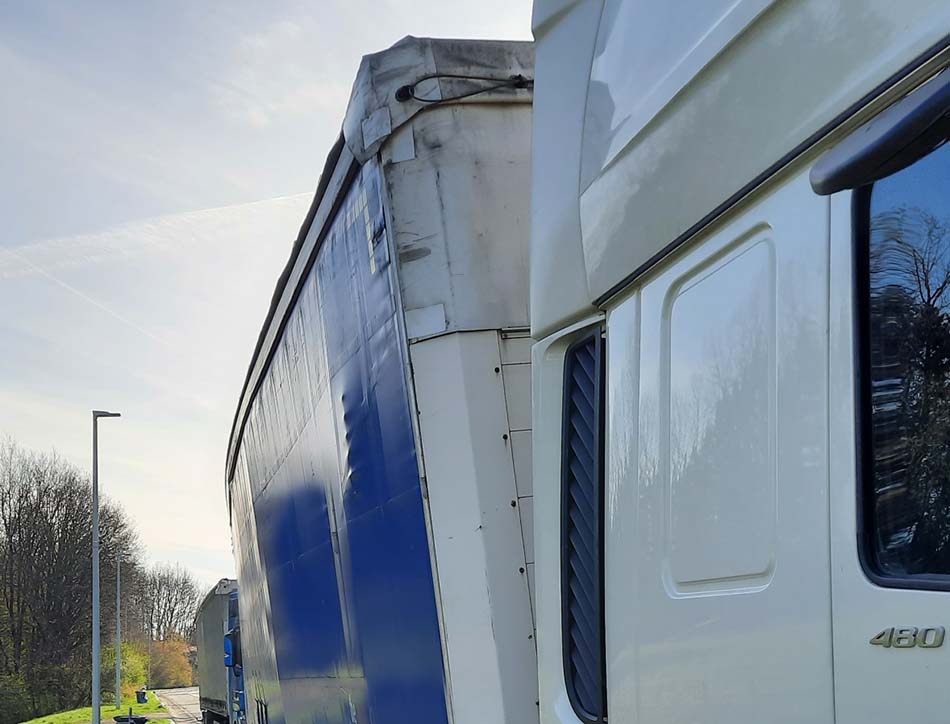
Figure 1 [Raymond Lausberg]
This photo shows what suggested to the Belgian Police that there was a problem here. Either the cargo was loaded to one side, which would not be right, or it had slipped, which speaks for the fact that the load was inadequately secured.
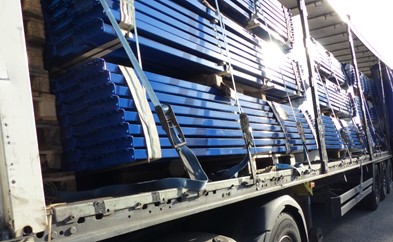
Figure 2 [Raymond Lausberg]
Figure 2 removes any doubt. The load is inherently unstable, in other words, the load units were poor and unsuitable for being transported in this way. The way in which the load is stacked is foolhardy. This image suggests that more than one mistake was made. A vehicle with a load that has slipped this much has to be taken off the road until the cargo has been loaded and secured properly. This vehicle was stopped and the cargo had to be unloaded, reloaded and secured properly before the vehicle was allowed to continue on its way.
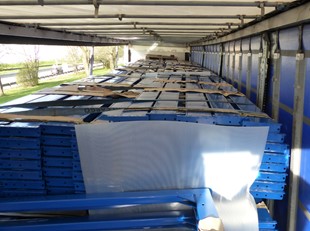
Figure 3 [Raymond Lausberg]
Figure 3 shows the disastrous load from a different perspective. The load is resting against the tarpaulin on the right of the vehicle and has shifted to such an extent that the vehicle, or at least the trailer, has tilted.
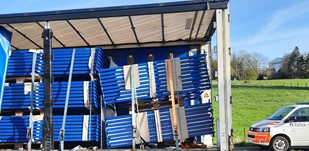
Figure 4 [Raymond Lausberg]
Figure 4 gives us some clues as to the root cause of the problem. Whoever loaded the vehicle had some idiosyncratic artists working for them. A sort of see-saw had been built for the load, but it was so weak that it had already broken.
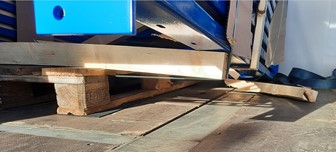
Figure 5 [Raymond Lausberg]
Figure 6 really shows what’s going on. There are pieces of squared lumber placed laterally underneath the blue metal frames. These are in turn resting on just one pallet. Dunnage is usually designed to give a load a stable foundation. In this case, the opposite effect was achieved. The metal frames were so large that they protruded considerably in all directions. Because they were stacked, they were also heavy enough to break the unsupported squared lumber. It was as if those responsible had completely misunderstood the simplest laws of physics. The whole thing could have been from an episode of “Candid Camera” if it were not for the fact that this attempt to load the cargo was meant in all seriousness. Otherwise, no responsible loader would ever have allowed the driver onto the road.
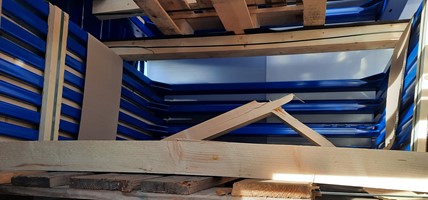
Figure 6 [Raymond Lausberg]
Figure 6 shows that the precarious balancing act carried on through the second layer. Not only that: The entire vehicle had been loaded in this way, as we can clearly see in the next photo.
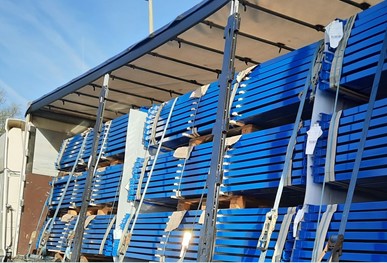
Figure 7 [Raymond Lausberg]
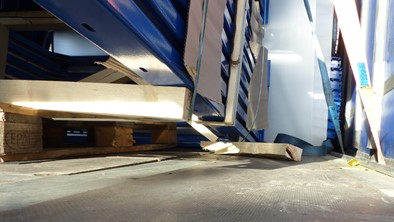
Figure 8 [Raymond Lausberg]
We should perhaps mention that anti-slip material had been used in some places, as we can see here underneath the bottom pallet, although none had been used on top of the pallet.
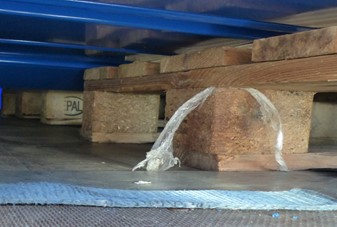
Figure 9 [Raymond Lausberg]
Here again, we see that no anti-slip material had been used.
How to secure the load properly:
- To start with, wooden dunnage must be placed under the back and front of the load and must at least cover the entire width of the load. Rectangular shaped dunnage should be preferred.
- It is possible that the pallets were used to prevent damage to the paint while the load was being moved with a forklift truck. If that is the case, the load needs to be packaged differently – in a way that protects it from scratches. The idea with the pallets was tantamount to a foolish prank: One that may make us smile until we realize that it was meant seriously and it makes us shudder.
- To improve the stability of the load units, rectangular dunnage covered with anti-slip material on both sides could be placed across the entire width of the vehicle on each layer.
- Because it seems that the load units are inherently unstable, it may make sense to use a combination of loop lashings and tie-down lashings.
- Whatever approach is taken, it seems that the load units need to be bundled more securely.
- If the end wall is not able to provide sufficient securing force, the front face of the load could be restrained using several pallets stacked on top of each other. This involves passing squared lumber through the pallets (across the width of the vehicle) and securing each layer to the rear with a loop lashing.
The fact that the driver was still standing around at the inspection station after 11 days is testament to the state of at least parts of our transport industry. In our opinion, “shameful” is too mild an expression.
Your load securing columnists wish you a safe and secure merry month of May.
Back to beginning
